This article was co-authored by Laura Marusinec, MD. Dr. Marusinec is a board certified Pediatrician at the Children's Hospital of Wisconsin, where she is on the Clinical Practice Council. She received her M.D. from the Medical College of Wisconsin School of Medicine in 1995 and completed her residency at the Medical College of Wisconsin in Pediatrics in 1998. She is a member of the American Medical Writers Association and the Society for Pediatric Urgent Care.
wikiHow marks an article as reader-approved once it receives enough positive feedback. This article received 11 testimonials and 100% of readers who voted found it helpful, earning it our reader-approved status.
This article has been viewed 510,704 times.
While anyone can get airsick, some people are more susceptible to it, and have problems practically every time they travel by plane. Airsickness is a type of motion sickness, caused by conflicting signals your senses tell your brain. Your eyes adjust to the lack of movement around you and send a message to your brain that you are sitting still. Your inner ear, however, senses the actual movement. The conflicting signals result in nausea, and sometimes vomiting. Fortunately, there are some things that you can do to avoid getting sick on an airplane.
Steps
Preparing for Your Airplane Travel
-
1Avoid heavy meals. Pay attention to what you eat for at least 24 hours before your trip. Try not to eat fatty, greasy, or heavily spiced or salted meals. Instead, try eating smaller, but more frequent meals or snacks, prior to your flight. Avoid eating a heavy meal just before traveling.
- Do not eat foods that make you aware of your stomach. For example, avoid foods that cause a feeling of heartburn or reflux. The less you concentrate on your stomach, the better.
- Try not to eat anything immediately before flying, but don’t board the plane with an empty stomach either.
-
2Limit your alcohol consumption. Alcohol intake prior to traveling can be a trigger for airsickness in many people. Try to avoid consuming alcohol, and also be sure to drink plenty of water.Advertisement
-
3Choose your seat carefully. Most of the time, you can choose your seat as you purchase your plane ticket. Take care to choose a seat over the wing, and by the window.[1]
- The seats over the wings will feel the least amount of motion during flight. Having a window seat will allow you to focus your gaze on the horizon, or another fixed object in the distance.[2]
- If those seats are not available, then choose a seat very near the front of the plane, and by the window. The front of the plane is another section that feels less motion while in flight.
-
4Get plenty of rest. Being well rested as you begin your flight can help your body to maintain a more relaxed state.[3]
-
5Use motion sickness medications. Preventing airsickness is better than trying to treat it once the symptoms have started. Your doctor may be able to help by prescribing medications used to prevent motion sickness.
- Several classes of medications are available to help with motion sickness. Some are available over-the-counter, such as dimenhydrinate (Dramamine), and meclizine.
- More effective agents are available with a prescription, such as scopolamine products. Scopolamine is most often prescribed in a patch form that you place behind your ear about 30 minutes before flying.
- Other drug options are available, but many have side effects that may not be right for you. Examples include promethazine and benzodiazepines.
- Promethazine is commonly used to treat nausea and vomiting symptoms caused by an illness, but also causes sedation which can last for several hours.
- Benzodiazepines are also useful in preventing airsickness, but they work primarily by controlling anxiety problems. Benzodiazepines also can cause heavy sedation. Some examples of drugs in this group include alprazolam, lorazepam, and clonazepam.
- Your doctor will know what drug is best for you.
-
6Ask your doctor about your existing medications. Some routine medications can make you more susceptible to feeling nauseous than others. Your doctor may be able to help you temporarily adjust your medications for your upcoming trip.
- Never change your medication regimen on your own. Doing so can also cause nausea, vomiting, diarrhea, and other problems that you do not want happening while you are in the air. Plus, you may be putting yourself at risk of worsening your medical condition.
During Your Flight
-
1Avoid reading or playing hand-held games. Focusing on something closer to your face and eyes, worsens the confused motion signals in your brain.[4]
- Try using headphones to listen to music, listen to a recorded book or work-related topic, or watch an in-flight movie to help pass the time.
-
2Focus on the horizon. Gazing far off at a fixed point, such as focusing on the horizon, helps to reassure your brain and stabilize your equilibrium. Taking that seat by the window can help you to look at a fixed point far away, like the horizon.[5]
-
3Adjust the air vents. Make sure you have fresh air blowing around your face. Breathing fresh, cool, air can help you to relax, and keep you from becoming too hot. Personal mini-fans may also help to keep the air cool, and moving around you.[6]
-
4Control your breathing. Rapid and shallow breathing makes your symptoms worse. Taking slow and deep breaths has been shown to help manage motion sickness symptoms better than breathing normally.
- Using techniques that encourage slow and deeper breathing helps you to engage a part of your nervous system, called the parasympathetic nervous system, that works to calm things down. This type of breathing helps you to relax and create a calmer state throughout your body.
-
5Use the head rest on the seat. This can help you to relax, but it also helps to stabilize the movements of your head. Use a neck pillow if that makes you feel more comfortable.[7]
-
6Eat lightly and avoid alcohol and caffeine during your flight. Avoid ingesting anything that could be an irritant to your stomach. Consider eating dry crackers and drinking cool water over ice during your flight.[8]
- Drink plenty of water during your flight to stay hydrated.
-
7Stand up. If you begin to feel queasy, stand up. Lying back or lying over in the seat is not helpful. Standing up can help your body to establish a sense of balance, and hopefully counteract the feeling of nausea.[9]
-
8Ask the flight attendant to move you if people around you are airsick. Smelling and hearing others around you that are airsick is a big trigger, causing your own airsick feelings to escalate. Changing seats on a plane is not always easy, but it may be worth the asking.[10]
-
9Focus on other things. Try to stay positive, as relaxed as possible, stay cool, and focus on other things.[11]
- If you are traveling for business, think about the presentation you will be giving. If you are traveling for fun, then anticipate the relaxing vacation you are about to enjoy.
-
10Listen to music. Listening to music with headphones can help you to focus on the music, relax your mind and body, and block out any noises around you that may heighten your stress and anxiety, like crying babies, or other people that may be airsick.[12]
Getting Help for Serious or Chronic Problems
-
1Get help from a trained therapist. Anxiety is a trigger for getting airsick. By using cognitive behavioral therapy methods, you can learn to control feelings of anxiety and fear, and overcome getting airsick.
-
2Try progressive muscle relaxation. This technique teaches you to focus your thoughts and energy on controlling your muscles, and helps you to become more aware of different physical sensations.[13]
- Progress your way up or down your body, starting with your toes for example. Focus on tensing a muscle group and holding it for about five seconds, relax the muscles for 30 seconds, repeat a few times, then move on to the next muscle group.[14]
-
3Consider habituation training. Even some pilots are susceptible to getting airsick. To overcome this problem, many pilots, as well as people that have jobs that require frequent air travel, will try habituation training. This involves repeated exposure to the thing that makes you sick, like taking short trips in airplanes often, especially just before a long flight.[15]
-
4Explore biofeedback techniques. Studies involving pilots who have trouble with motion sickness have shown promising results. By using biofeedback combined with relaxation techniques, they have overcome problems with motion sickness.
- In one study, pilots learned to overcome their motion sickness by being placed in a tilted, revolving, chair that caused them to get sick. They were monitored for changes in areas such as body temperature, and muscle tension. By using biofeedback instruments and relaxation methods, the group learned to control their motion sickness.
-
5Talk to your doctor. If your airsickness gets progressively worse or is severe, you should ask your doctor for a recommendation for a doctor who specializes in diseases of the ear, nose, throat, equilibrium, and neurological systems.
References
- ↑ http://www.medicinenet.com/script/main/art.asp?articlekey=59876
- ↑ http://www.medicinenet.com/script/main/art.asp?articlekey=59876
- ↑ http://my.clevelandclinic.org/health/healthy_living/hic_Steps_to_Staying_Well/hic_Travel_Medical_Kit/hic_What_You_Need_to_Know_about_Seasickness-or-motion-sickness
- ↑ http://my.clevelandclinic.org/health/healthy_living/hic_Steps_to_Staying_Well/hic_Travel_Medical_Kit/hic_What_You_Need_to_Know_about_Seasickness-or-motion-sickness
- ↑ http://my.clevelandclinic.org/health/healthy_living/hic_Steps_to_Staying_Well/hic_Travel_Medical_Kit/hic_What_You_Need_to_Know_about_Seasickness-or-motion-sickness
- ↑ http://my.clevelandclinic.org/health/healthy_living/hic_Steps_to_Staying_Well/hic_Travel_Medical_Kit/hic_What_You_Need_to_Know_about_Seasickness-or-motion-sickness
- ↑ http://my.clevelandclinic.org/health/healthy_living/hic_Steps_to_Staying_Well/hic_Travel_Medical_Kit/hic_What_You_Need_to_Know_about_Seasickness-or-motion-sickness
- ↑ http://www.medicinenet.com/script/main/art.asp?articlekey=59876
- ↑ http://my.clevelandclinic.org/health/healthy_living/hic_Steps_to_Staying_Well/hic_Travel_Medical_Kit/hic_What_You_Need_to_Know_about_Seasickness-or-motion-sickness
- ↑ http://my.clevelandclinic.org/health/healthy_living/hic_Steps_to_Staying_Well/hic_Travel_Medical_Kit/hic_What_You_Need_to_Know_about_Seasickness-or-motion-sickness
- ↑ http://wwwnc.cdc.gov/travel/yellowbook/2014/chapter-2-the-pre-travel-consultation/motion-sickness
- ↑ http://wwwnc.cdc.gov/travel/yellowbook/2014/chapter-2-the-pre-travel-consultation/motion-sickness
- ↑ http://www.mayoclinic.org/healthy-lifestyle/stress-management/in-depth/relaxation-technique/art-20045368?pg=2
- ↑ http://www.mayoclinic.org/healthy-lifestyle/stress-management/in-depth/relaxation-technique/art-20045368?pg=2
- ↑ http://wwwnc.cdc.gov/travel/yellowbook/2014/chapter-2-the-pre-travel-consultation/motion-sickness
About This Article
To prevent airsickness on a plane, try to choose a seat near the middle of the plane and next to a window if you can, where you'll experience less motion and have something to focus on so you don't get as nauseous. Also, turn on the air vent above you so there's fresh air blowing on your face, and lean back in your seat and take slow, deep breaths. Right before your trip and while you're in the air, avoid drinking alcohol or caffeine since they can make airsickness worse. To learn how to overcome chronic or serious airsickness, scroll down!










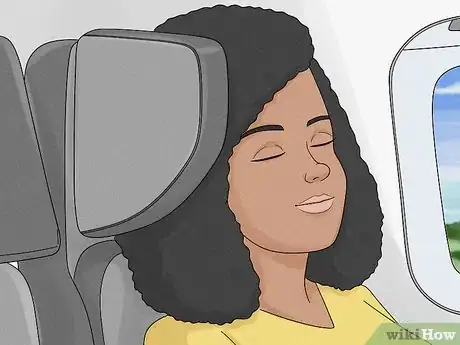




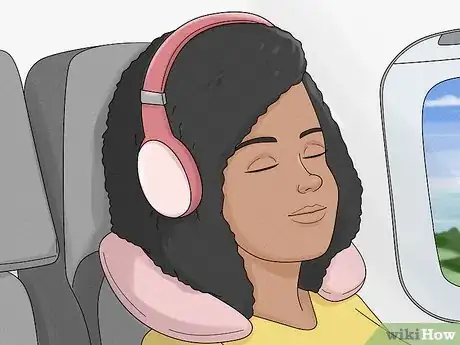

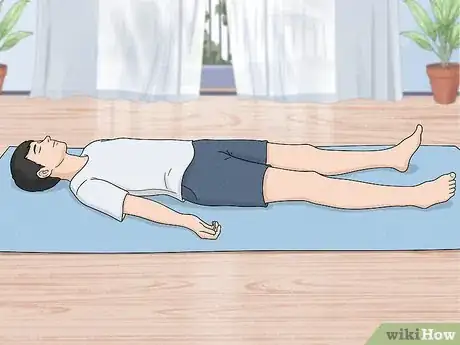




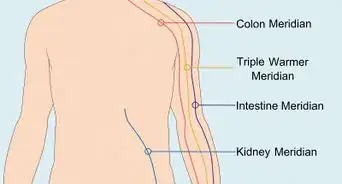




-Step-9-Version-5.webp)



















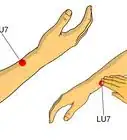




































Medical Disclaimer
The content of this article is not intended to be a substitute for professional medical advice, examination, diagnosis, or treatment. You should always contact your doctor or other qualified healthcare professional before starting, changing, or stopping any kind of health treatment.
Read More...